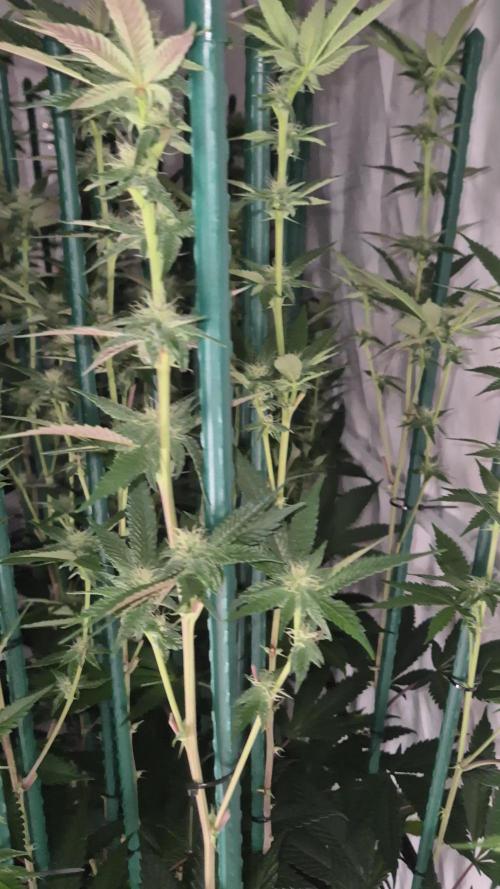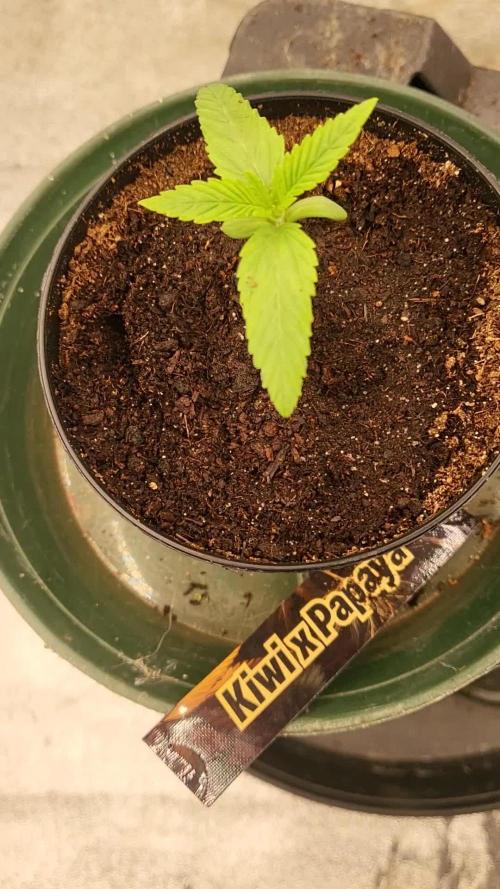The Grow Awards 2026 🏆 



























Likes
Comments
Share


@TTerpz
Follow
Pretty sure she’s stunted from transplanting into fox farm ocean forest 1/16 process has slowed but new growth is bouncing back on this photoperiod. Switched the light back to my 250 watt bc my pt5000 was blasting the shit out of her.
Likes
18
Share


@BlumenBot
Follow
Well the Greenhouse Seeds SSH beans were all bunk so I'm going with the backup Coastal Genetics SSH which on the first bean popped right out.
First run in the new BlumenBot Solo! So stoked for this cabinet to get rolling.
Https://instagram.com/blumenbot
https://youtu.be/_0QgBk3B5sA
3/17 - into the dirt (coco) it goes
3/19 - crazy how fast this grew 2" overnight
Likes
5
Share


@SurSideCrew
Follow
Baklava de The Plug Seeds es un cruce de Wedding Cake X Gelato. Hay varios Phenos (3) el mejor para mi gusto es bastante púrpura y de gran rendimiento. Soporta bien altas cargas de fertilizante como además las altas temperaturas de verano. Con el frío tiende a cambiar el color a negro/purpura con tonos de verde lima y rojizos cobres. Terpenos que recuerdan a una bolleria o panadería, toques dulces, mantequilla, frutos secos, canela, miel y el pheno Gelato sale mas a crema dulce terrosa. Hay un pheno que es bastante mas Kush y Gassy! Altos contenidos en THC y muy buenos resultados para hacer extracciones.
Likes
8
Share


@GuniGugu
Follow
- BioBizz Light Mix soil
- BioBizz Nutrients used according to their schedule
- stopped LST
Likes
17
Share


@JamCam87
Follow
checking under my jewelers loop daily like it’s nobody’s business! All cloudy still not much is changed but I’m being patient. I did clip a couple branches off of the white runts because it seemed very dry so I took them off and trimmed them I may give them a toke later this evening. Today is the last day I’m going to water I think I’m gonna have my lights on for two more days and then do 48 of darkness I’m already one day until week 10 of flowering and I should be done any day now! rh able for following my grow!
Likes
2
Share


@MrGreen_theOG1978
Follow
I ran out of beastie blooms so I went ahead and switched to sonic blooms. It's a lot stronger than beastie so we will see if there is a difference. But here we are at week 4. Everything is going pretty smooth, I did a res change. Been changing around every 14 days I notice a little nitrogen build up if I go any longer than 14 days. Very low nitrogen feeding plant
Likes
10
Share


@MasterGrowda88
Follow
The third week is over, and the ladies have finished their stretching phase. This meant one last trimming. I removed all the solar eclipses that were on a flower. This way, every flower receives light and photosynthesis is absorbed through the lower part. This way, I achieve maximum yield and no undeveloped flowers
Likes
11
Share


@CookiesAndCake
Follow
Week 18
Day 120 | 08/11/2021:
I just can’t stop looking at them, they are so plump 🍑 I watered them today with just 1L of plain water because I want to harvest them in 4 days and don’t want them to wilt, but at the same time I know it’s better to let the soil be on the dryer side when harvesting.
Day 124 | 12/11/2021:
Today the beauties are being harvested!!! So exciting because they’ve been growing for a while and I can’t wait to finally vape them. From day 1, no, even from germination, the seeds were so strong and quite resistant to nutrient deficiencies. Very good and strong genes, I’m really happy that I tried them out! I will be hanging them with the stem to dry for 10-14 days, I keep the leaves so that the humidity can stay high in the tent, I used to struggle a lot with humidity when I would hang them without leaves, and then the buds tasted like hay for the next month, so I try to avoid that now. Can’t wait to see that the total weight is! They are quite big but I think the buds are not extremely dense so it could be deceiving 👀
Likes
4
Share


@GreenForMiles
Follow
This strain was a mystery from the beginning. I planted 6 plants and got 4 drastically different phenos. Surprisingly they all have similar aromas but visually they’re much different. She stretched a lot and needed two layers of the sCrog net. One plant had 2 random seeds so I’ll probably be planting her again. Next time I’ll use a low stress method to see her at her full potential!
Likes
16
Share


@CzAlmighty
Follow
Hi friends. 🍰🍰🍰
beautiful next week behind me .Flowers and looks healthy and strong. I water the flower every two days. The fruits look beautiful. And the scent is incredibly amazing💚
Likes
2
Share


@BigGGrows
Follow
This week has yielded positive results from the FIM And LST. I topped the internodal new branching that grew from the FIM job as well this week and the 2 extra tops are growing in response on each branching. She is now under a 4 bulb vivosun T5 6500K fixture and is responding very well to the light changes. Her stems are begging to give off terpines when rubbed. She smells of tart sweet lemons and diesel fuel haha. I am very happy about this grow and am expecting preflower to begin soon.
Likes
12
Share


@Seymour_buds
Follow
Have 2 problems with the girls.
1. 3 plants showing signs of cal mag deficiency on lower leaves.
2. 1 plant showing what seems like potassium deficiency.
Ph has been perfect all week between 5.8-6.3
I flushed for 1 day with ph water and then added nutes with increased calmag and bud blood since i will be sending into flower in 3 days.
Likes
Comments
Share


@DharmaTheDog
Follow
The seeds germinated in two days. I put them in the dark in the cellar where the temperature was stable at 25 degrees. .
Likes
5
Share


@Do_it_Dan
Follow
Nice week for the lady runtz, many many bud sights, the smell is getting there, had to give a little extra pk warrior but other than that she's doing well 😀 👍 happy growing and stay green ✌️ 💚 👌 peace






































